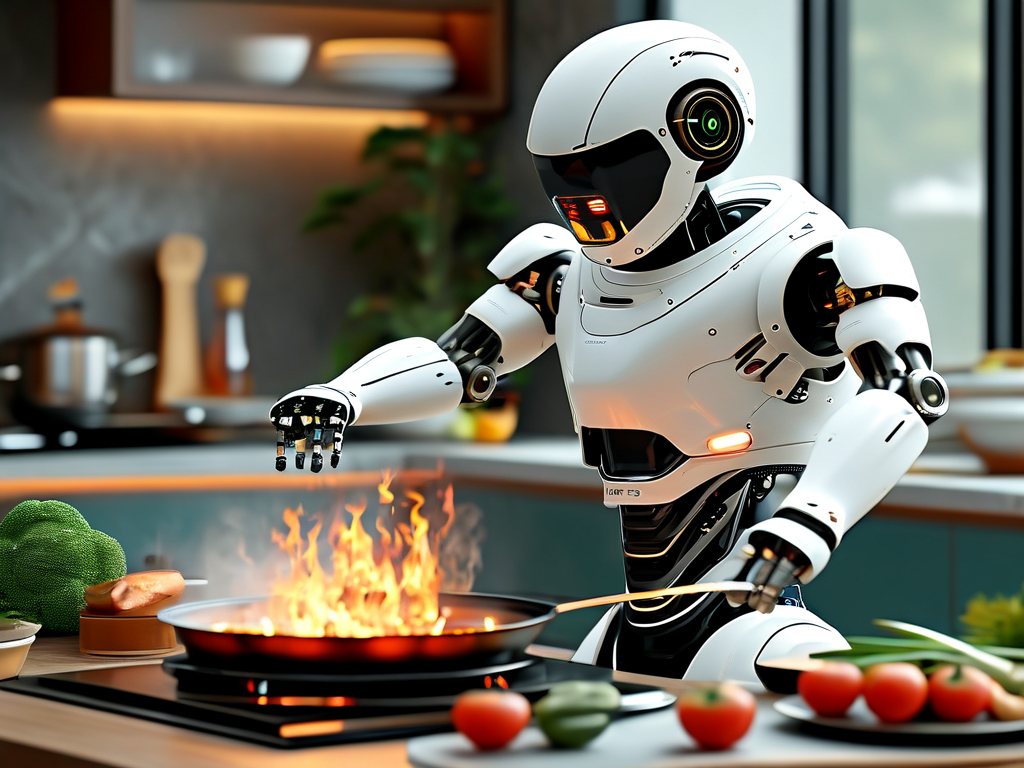The integration of robotics into culinary practices has transformed how we perceive food preparation. At its core, robot cooking technology combines precision engineering, artificial intelligence (AI), and advanced sensor systems to replicate – and often enhance – human culinary skills. This article explores the fundamental principles driving this innovation and its implications for modern kitchens.

Mechanical Precision in Action
Central to robotic cooking systems is their ability to execute tasks with micrometer-level accuracy. Unlike human chefs, robotic arms equipped with multi-axis joints can replicate knife cuts, stirring motions, and temperature adjustments without fatigue. For instance, a dumpling-folding robot uses pressure-sensitive grippers to create identical pleats 2.3mm apart, ensuring uniform cooking times. These movements are powered by servo motors that translate digital instructions into physical actions at speeds up to 1,200 RPM.
Sensory Feedback Loops
Modern cooking robots employ infrared thermometers, LiDAR scanners, and moisture sensors to monitor food states in real time. A rice-cooking bot, for example, might use ultrasonic sensors to measure water absorption rates in grains, adjusting heat output through induction coils the moment starch gelatinization reaches 62°C. This sensory network feeds data to machine learning algorithms that refine cooking parameters with each batch, mimicking a chef's iterative learning process.
Algorithmic Recipe Execution
Behind every robotic chef lies a neural network trained on thousands of recipe variations. When preparing beef bourguignon, the system cross-references ingredient databases with thermal dynamics models to determine optimal braising times. Natural language processing allows these systems to interpret ambiguous instructions like "simmer until reduced by half," converting them into precise milliliter measurements through computer vision-based volume tracking.
Energy Efficiency Considerations
Robotic kitchens optimize energy use through predictive analytics. A noodle-cooking robot might calculate exact water volumes needed for specific pasta types, reducing both water waste and gas consumption by 40% compared to traditional methods. Heat recovery systems in advanced models capture steam energy to preheat subsequent cooking phases, demonstrating how automation supports sustainable culinary practices.
Human-Machine Collaboration
Contrary to popular belief, these systems aren't designed to replace chefs but to augment their capabilities. In prototype kitchens, human chefs program flavor profiles into robotic wok stations that then execute repetitive stir-frying tasks. This partnership allows culinary experts to focus on creative aspects while machines handle precision-dependent processes like sauce emulsification or sous-vide temperature control.
Challenges and Limitations
Current limitations include handling irregularly shaped ingredients – a robot struggles to peel a twisted ginger root as deftly as human hands. Researchers are addressing this through soft robotics incorporating flexible silicone grippers with tactile feedback. Another hurdle is replicating the "intuitive adjustments" master chefs make during cooking, requiring advancements in contextual AI that understand variables like altitude-induced boiling point variations.
Future Development Trajectories
Next-generation systems are exploring quantum computing applications for real-time molecular gastronomy simulations. Imagine a robot that can predict how a new cheese blend will melt under specific infrared broiling conditions before physical testing. Other innovations include swarm robotics for banquet-scale meal preparation, where multiple units coordinate through 5G networks to synchronize dish completion times.
As these technologies mature, they're reshaping food industries from home kitchens to industrial catering. While skeptics argue about the loss of "human touch" in cooking, proponents highlight their potential to democratize gourmet cooking and ensure consistent nutritional quality. What remains clear is that robotic cooking technology isn't merely automating existing processes – it's rewriting the rules of culinary science itself.









